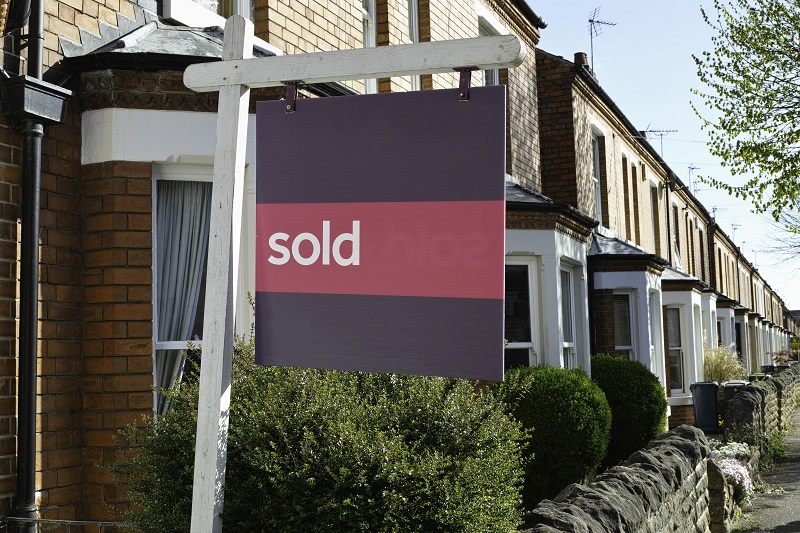Important: From 1 April 2025, the Stamp Duty threshold for first time buyers was reduced to £300,000, with 5% payable on the portion between £300,000 and £500,000. Purchases over £500,000 no longer qualify for first time buyer Stamp Duty relief.
First Time Buyer Stamp Duty
First time buyers often have to trek through a blizzard of information about deposits, mortgage offers and all the extra costs associated with taking out a loan from a bank or building society to buy a house. In the mix of potentially conflicting advice, it’s important to hold onto one thing: being a first time buyer can save you money.
Alongside mortgage products that are designed to give you a leg-up onto the property ladder, a key advantage to being a first time buyer is that you’re likely to be eligible for Stamp Duty relief (Stamp Duty Land Tax or SDLT is a tax you pay when buying property in the UK).
Let's take a look at the details of what Stamp Duty is and how you may be eligible to avoid paying it below.
Cut to the chase and use our First Time Buyer Stamp Duty Calculator now.
The Topics Covered in this Article Are Listed Below:
- What Is Stamp Duty?
- Do First Time Buyers Pay Stamp Duty?
- What First Time Buyer Stamp Duty Relief Is There?
- How Much Is Stamp Duty for First Time Buyers?
- What Are the Standard Stamp Duty Rates?
- What Is First Time Buyer Stamp Duty in Scotland?
- What Is First Time Buyer Stamp Duty in Wales?
- Who Is a First Time Buyer?
- Which Mortgages Allow You to Claim First Time Buyer Stamp Duty Relief?
- How Can They Know Whether I Am a First Time Buyer?
- Can I Be a First Time Buyer if I Inherited Property?
What Is Stamp Duty?
Stamp Duty – officially known as Stamp Duty Land Tax (SDLT) - is a tax payable if you purchase property or land in England or Northern Ireland above a certain price – currently £125,000. In Scotland, Stamp Duty is known as Land and Buildings Transaction Tax. Meanwhile, it's known as Land Transaction Tax in Wales.
Do First Time Buyers Pay Stamp Duty?
First time home buyers don’t pay any Stamp Duty on properties worth up to £300,000. They receive a relief known as the first time buyer Stamp Duty exemption. They do pay Stamp Duty on properties above this amount though, but not for the whole value of the property. We break down how this relief works in the next section.
What First Time Buyer Stamp Duty Relief Is There?

If you’re a first time buyer, you qualify for relief also known as the first time buyer Stamp Duty exemption. This is where you don’t pay SDLT for properties valued up to £300,000.
If your property costs more than this, you’ll pay 5% on the portion between £300,000 and £500,000. If the property is worth more than £500,000, there’s no Stamp Duty relief and you’ll pay at the standard rates.
How Much Is Stamp Duty for First Time Buyers?
First Time Buyer Stamp Duty Rates
Property Value | FTB SDLT Rate from 1/4/2025 |
|---|---|
Up to £300,000 | 0% |
£300,001 - £500,000 | 5% |
Example
- You’re a first time buyer purchasing a property for £500,000
- You would pay no Stamp Duty on the first £300,000
- You would pay 5% Stamp Duty on £200,000
- 5% of £200,000 = £10,000
- You pay a total of £10,000 in Stamp Duty
If the property is worth more than £500,000, there’s no first time buyer Stamp Duty exemption and you’ll pay Stamp Duty at the standard rates.
What Are the Standard Stamp Duty Rates?
The standard Stamp Duty rates for residential property (for non-first time buyers) are below.
Standard Stamp Duty Rates
Property Value | Standard SDLT Rate from 1/4/2025 |
|---|---|
Up to £125,000 | 0% |
£125,001 - £250,000 | 2% |
£250,001 - £925,000 | 5% |
£925,001 - £1,500,000 | 10% |
From £1,500,001 | 12% |
You pay Stamp Duty to the HMRC via your solicitor/conveyancer within 14 days of completion of the property sale. You can calculate how much you’ll owe using our Stamp Duty calculator.
What Is First Time Buyer Stamp Duty in Scotland?
If your first home is going to be in Scotland, you’ll be paying Land and Buildings Transaction Tax (LBTT) instead of Stamp Duty. There’s no LBTT paid on properties valued less than £175,000 for first time buyers. The LBTT rates for first time buyers in Scotland are as follows below.
First Time Buyer LBTT Rates
Property Value | LBTT Rate for FTBs 2025 |
|---|---|
Up to £175,000 | 0% |
£175,001 - £250,000 | 2% |
£250,001 - £325,000 | 5% |
£325,001 - £750,000 | 10% |
From £750,001 | 12% |
What Is First Time Buyer Stamp Duty in Wales?
Unlike England, Northern Ireland and Scotland, there is no relief for first time buyers in Wales. You’ll be paying the same Land Transaction Tax (LTT) whether or not this is your first home. The threshold for paying LTT is £225,000, with the rates as follows below.
First Time Buyer LTT Rates
Property Value | LTT Rates 2025 |
|---|---|
Up to £225,000 | 0% |
£225,001 - £400,000 | 6% |
£400,001 - £750,000 | 7.5% |
£750,001 - £1,500,000 | 10% |
From £1,500,001 | 12% |
Who Is a First Time Buyer?
A first time buyer is generally defined as someone who has never owned any interest in a property before, whether purchased outright, inherited, or acquired through any other means.
This means that if you’ve ever been on the title deeds of a property, you won’t qualify for the first time buyer Stamp Duty exemption.
Still not sure? Basically, you’re a first time buyer and qualify for the Stamp Duty exemption if:
You have never owned a home: the primary criterion is that the individual has not previously owned a home or had a mortgage in their name
You are purchasing a primary residence: the property being purchased must be intended as the buyer's primary residence, not as a rental or investment property
It’s worth noting that if you haven’t owned a property for a certain period of time - e.g. 3 - 5 years - some lenders may be able to offer you first time buyer mortgage rates or incentives, even though you aren’t technically a first time buyer. You won't however qualify for the first time buyer Stamp Duty relief.
Find out more about what makes a first time buyer and a more detailed answer to question: can I be a first time buyer again? on our site.
Which Mortgages Allow You to Claim First Time Buyer Stamp Duty Exemption?

If you meet the definition of a first time buyer, you still need to be aware of the eligibility criteria that are associated with different first time buyer mortgage deals. It’s worth reading up on these, as some criteria may still prevent you from accessing Stamp Duty relief.
- Joint mortgage –if you’re planning on taking out a joint mortgage, you can still be eligible for Stamp Duty relief. However, both of you will have to meet the definition of a first time buyer
- Joint borrower sole proprietor– you can claim the first time buyer Stamp Duty exemption if you take out a joint borrower sole proprietor mortgage with a previous homeowner but it’s only you as the first time buyer who’s on the title deeds
- Shared ownership– you only need to pay Stamp Duty on the share of the property you’re buying. If the portion of the property you own is valued below the Stamp Duty threshold for first time buyers in your region, you won’t need to pay
- Gifted deposit mortgage – if you’re receiving a gifted deposit and the person offering the gift doesn’t share in the ownership of the property, you’re still eligible for Stamp Duty relief
How Can They Know Whether I Am a First Time Buyer?
You must declare that you’re a first time buyer during the house purchase process. Your conveyancer or solicitor will ask you to complete a first time buyer declaration form. You’re not considered a first time buyer until you submit this form.
This declaration form is a legal document so it’s critically important that you’re honest and transparent on this form and throughout the entire house purchase and mortgage processes.
Can I Be a First Time Buyer if I Inherited Property?
If you are, or have been listed as an owner or part owner on the title deeds of a residential property or land - whether this property was inherited from a deceased relative or through marriage or civil partnership - you cannot declare yourself to be a first time buyer. The same applies if you were previously gifted a house. The only exception is if you inherited non-residential property or a mixed-use property that did not include a dwelling.
For any advice, or if you’re not sure whether you qualify as a first time buyer, speak to your solicitor.
They will help you make the necessary declaration and advise on the best mortgage agreement that suits your needs. The benefits of Stamp Duty relief are incredibly important in helping first time buyers onto the property ladder and into their dream house.
First-Time Buyer Mortgages
Discover the best first time buyer mortgage rates available and the latest advice from John Charcol: mortgage broker for first time buyers.
Buying Your First Home
From the definition of a first-time buyer, through the steps to buying a property and the costs you’ll face - everything you need to know is in our guide.
How Much Can I Borrow?
This mortgage calculator examines your income and works out how much money a mortgage lender might provide you with
Stamp Duty Calculator
Use our stamp duty calculator and find out how much tax you will pay when buying a main residential or secondary property in England or Northern Ireland.
First Time Buyer Costs
Learn about the different first-time buyer costs when buying property and moving house. Start your journey here with our first-time buyer costs checklist.
Your First Mortgage Appointment
Your first mortgage adviser appointment can be overwhelming. Learn all you need to know and what you need to be prepared for prior to your first conversation.
The Bank of Mum and Dad – How to Help Your Children Buy a Home
With many prospective buyers turning to the bank of mum and dad, learn about some of the ways parents can support their children in buying a home.
Mortgage Deposit Guide
How much deposit will you need for your mortgage? We explain how mortgage deposits work, what LTV is, how your deposit affects your mortgage and more.
House Buying Mortgage Guide
Are you looking to buy your first home? Or perhaps want to move to a new area? Our step-by-step guide will tell you everything you need to know about buying a house.
Protecting Your Home and Property
It's important to understand what protection you must have in place to buy a home and the options open to you to provide you with peace of mind.
